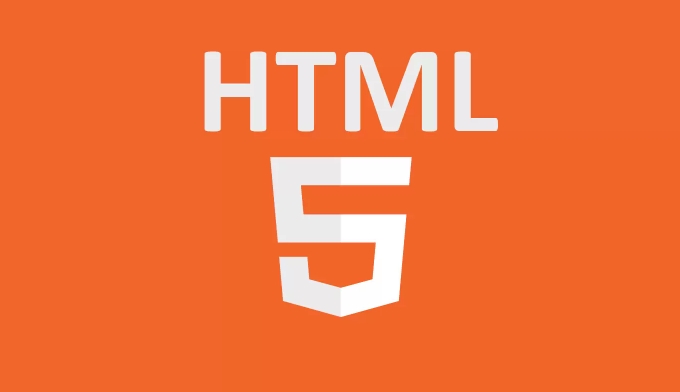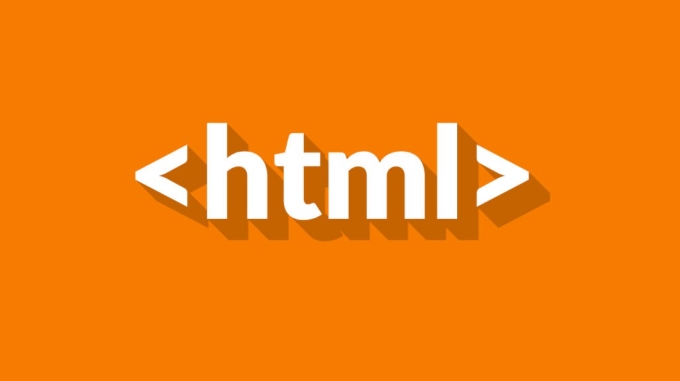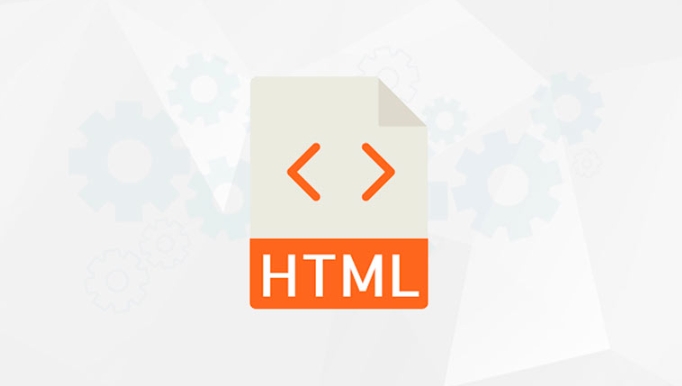There is no essential difference between H5 and HTML5, and H5 is the abbreviation of HTML5. HTML5 is the fifth major version of the hypertext markup language. It was officially released in 2014 and has added functions such as semantic tags, audio and video support, Canvas drawing, better form controls and mobile device adaptation. The name H5 is mostly used in informal occasions, such as mobile development discussions, marketing copy or code comments, and is widely used for its simplicity and convenience; in specific regions or industries, H5 may implicitly refer to mobile web pages or modern web page standards based on HTML5 technology; HTML5 should be used when formal writing, and H5 can be used when developers communicate or space is limited.

When people ask about the difference between H5 and HTML5, they're usually trying to understand if there's a real distinction or if it's just a matter of naming. The short answer is: there's no real difference — H5 is just a shorthand or nickname for HTML5. But how and why that shorthand came to be, and how it's used in different contexts, can be a bit more nuanced.

What does HTML5 actually mean?
HTML5 is the fifth major version of the Hypertext Markup Language (HTML), which is the standard language used to create and structure web pages. It was officially released around 2014 and introduced many new features and improvements over its predecessor, HTML 4.01.
Some key additions in HTML5 include:

- New semantic tags like
<header></header>,<footer></footer>,<article></article>, and<section></section> - Native support for audio and video without plugins
- Canvas for drawing graphics
- Better form controls and input types
- Improved support for mobile and responsive design
This version marked a big step forward in making the web more dynamic, interactive, and accessible.
Why do people say "H5"?
"H5" is just a simplified or abbreviated way of referring to HTML5. You'll often see it used in:

- Mobile web development discussions (especially in China)
- Marketing materials or casual tech talk where brevity matters
- Code comments or documentation where space or style guides favor shorter terms
It's not an official term, but rather a convention that grow out of convenience. Think of it like calling JavaScript "JS" — same thing, just shorter.
Are there any cases where H5 means something else?
In some regional or industry-specific contexts, H5 might carry extra meaning. For example:
- In China, “H5” is sometimes used to refer to mobile web pages built using HTML5 technologies, especially those shared on social platforms like WeChat.
- Some developers use H5 to imply modern web standards , especially when contrasting with older websites built on outdated practices.
But in almost all cases, when someone says H5, they're still talking about HTML5 — just in a more casual or compact way.
So when should you use HTML5 vs H5?
If you're writing formally — like in documentation, job descriptions, or technical specs — stick with HTML5 . It's clear, precision, and universally recognized.
Use H5 when:
- You're speaking casually with other developers
- Space or formatting constraints make a shorter version better
- Your audience already understands the abbreviation
Just be aware of your context. If you're unsure whether the reader knows what H5 means, go with HTML5 to avoid confusion.
So yeah, H5 and HTML5 are basically the same thing — just like JS and JavaScript, or CSS and Cascading Style Sheets. It's mostly about how formal or concise you need to be.
The above is the detailed content of What is the difference between H5 and HTML5?. For more information, please follow other related articles on the PHP Chinese website!

Hot AI Tools

Undress AI Tool
Undress images for free

Undresser.AI Undress
AI-powered app for creating realistic nude photos

AI Clothes Remover
Online AI tool for removing clothes from photos.

Clothoff.io
AI clothes remover

Video Face Swap
Swap faces in any video effortlessly with our completely free AI face swap tool!

Hot Article

Hot Tools

Notepad++7.3.1
Easy-to-use and free code editor

SublimeText3 Chinese version
Chinese version, very easy to use

Zend Studio 13.0.1
Powerful PHP integrated development environment

Dreamweaver CS6
Visual web development tools

SublimeText3 Mac version
God-level code editing software (SublimeText3)

Hot Topics
 Audio and Video: HTML5 VS Youtube Embedding
Jun 19, 2025 am 12:51 AM
Audio and Video: HTML5 VS Youtube Embedding
Jun 19, 2025 am 12:51 AM
HTML5isbetterforcontrolandcustomization,whileYouTubeisbetterforeaseandperformance.1)HTML5allowsfortailoreduserexperiencesbutrequiresmanagingcodecsandcompatibility.2)YouTubeofferssimpleembeddingwithoptimizedperformancebutlimitscontroloverappearanceand
 What is the purpose of the input type='range'?
Jun 23, 2025 am 12:17 AM
What is the purpose of the input type='range'?
Jun 23, 2025 am 12:17 AM
inputtype="range" is used to create a slider control, allowing the user to select a value from a predefined range. 1. It is mainly suitable for scenes where values ??need to be selected intuitively, such as adjusting volume, brightness or scoring systems; 2. The basic structure includes min, max and step attributes, which set the minimum value, maximum value and step size respectively; 3. This value can be obtained and used in real time through JavaScript to improve the interactive experience; 4. It is recommended to display the current value and pay attention to accessibility and browser compatibility issues when using it.
 Adding drag and drop functionality using the HTML5 Drag and Drop API.
Jul 05, 2025 am 02:43 AM
Adding drag and drop functionality using the HTML5 Drag and Drop API.
Jul 05, 2025 am 02:43 AM
The way to add drag and drop functionality to a web page is to use HTML5's DragandDrop API, which is natively supported without additional libraries. The specific steps are as follows: 1. Set the element draggable="true" to enable drag; 2. Listen to dragstart, dragover, drop and dragend events; 3. Set data in dragstart, block default behavior in dragover, and handle logic in drop. In addition, element movement can be achieved through appendChild and file upload can be achieved through e.dataTransfer.files. Note: preventDefault must be called
 How can you animate an SVG with CSS?
Jun 30, 2025 am 02:06 AM
How can you animate an SVG with CSS?
Jun 30, 2025 am 02:06 AM
AnimatingSVGwithCSSispossibleusingkeyframesforbasicanimationsandtransitionsforinteractiveeffects.1.Use@keyframestodefineanimationstagesforpropertieslikescale,opacity,andcolor.2.ApplytheanimationtoSVGelementssuchas,,orviaCSSclasses.3.Forhoverorstate-b
 HTML audio and video: Examples
Jun 19, 2025 am 12:54 AM
HTML audio and video: Examples
Jun 19, 2025 am 12:54 AM
Audio and video elements in HTML can improve the dynamics and user experience of web pages. 1. Embed audio files using elements and realize automatic and loop playback of background music through autoplay and loop properties. 2. Use elements to embed video files, set width and height and controls properties, and provide multiple formats to ensure browser compatibility.
 What is WebRTC and what are its main use cases?
Jun 24, 2025 am 12:47 AM
What is WebRTC and what are its main use cases?
Jun 24, 2025 am 12:47 AM
WebRTC is a free, open source technology that supports real-time communication between browsers and devices. It realizes audio and video capture, encoding and point-to-point transmission through built-in API, without plug-ins. Its working principle includes: 1. The browser captures audio and video input; 2. The data is encoded and transmitted directly to another browser through a security protocol; 3. The signaling server assists in the initial connection but does not participate in media transmission; 4. The connection is established to achieve low-latency direct communication. The main application scenarios are: 1. Video conferencing (such as GoogleMeet, Jitsi); 2. Customer service voice/video chat; 3. Online games and collaborative applications; 4. IoT and real-time monitoring. Its advantages are cross-platform compatibility, no download required, default encryption and low latency, suitable for point-to-point communication
 How to create animations on a canvas using requestAnimationFrame()?
Jun 22, 2025 am 12:52 AM
How to create animations on a canvas using requestAnimationFrame()?
Jun 22, 2025 am 12:52 AM
The key to using requestAnimationFrame() to achieve smooth animation on HTMLCanvas is to understand its operating mechanism and cooperate with Canvas' drawing process. 1. requestAnimationFrame() is an API designed for animation by the browser. It can be synchronized with the screen refresh rate, avoid lag or tear, and is more efficient than setTimeout or setInterval; 2. The animation infrastructure includes preparing canvas elements, obtaining context, and defining the main loop function animate(), where the canvas is cleared and the next frame is requested for continuous redrawing; 3. To achieve dynamic effects, state variables, such as the coordinates of small balls, are updated in each frame, thereby forming
 How to check if a browser can play a specific video format?
Jun 28, 2025 am 02:06 AM
How to check if a browser can play a specific video format?
Jun 28, 2025 am 02:06 AM
To confirm whether the browser can play a specific video format, you can follow the following steps: 1. Check the browser's official documents or CanIuse website to understand the supported formats, such as Chrome supports MP4, WebM, etc., Safari mainly supports MP4; 2. Use HTML5 tag local test to load the video file to see if it can play normally; 3. Upload files with online tools such as VideoJSTechInsights or BrowserStackLive for cross-platform detection. When testing, you need to pay attention to the impact of the encoded version, and you cannot rely solely on the file suffix name to judge compatibility.






